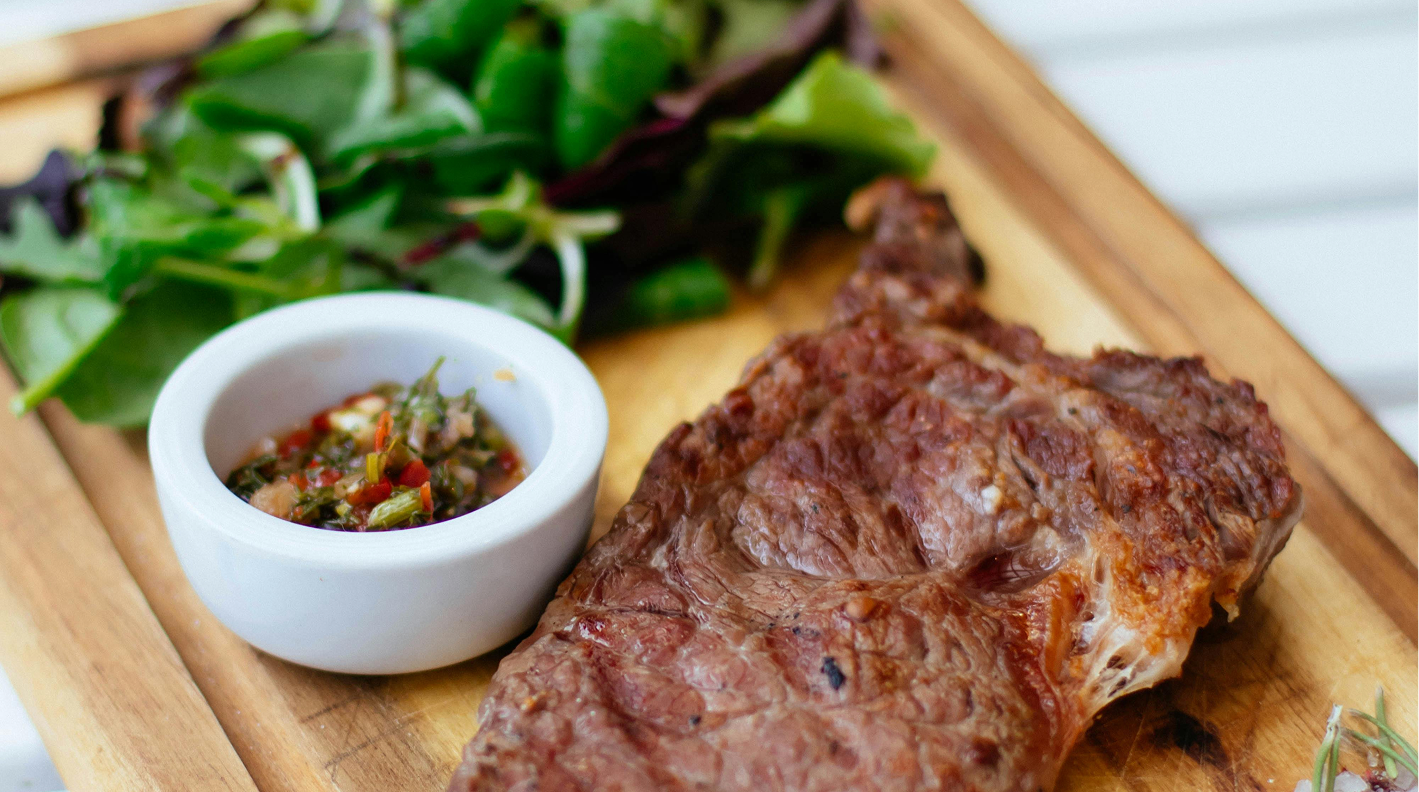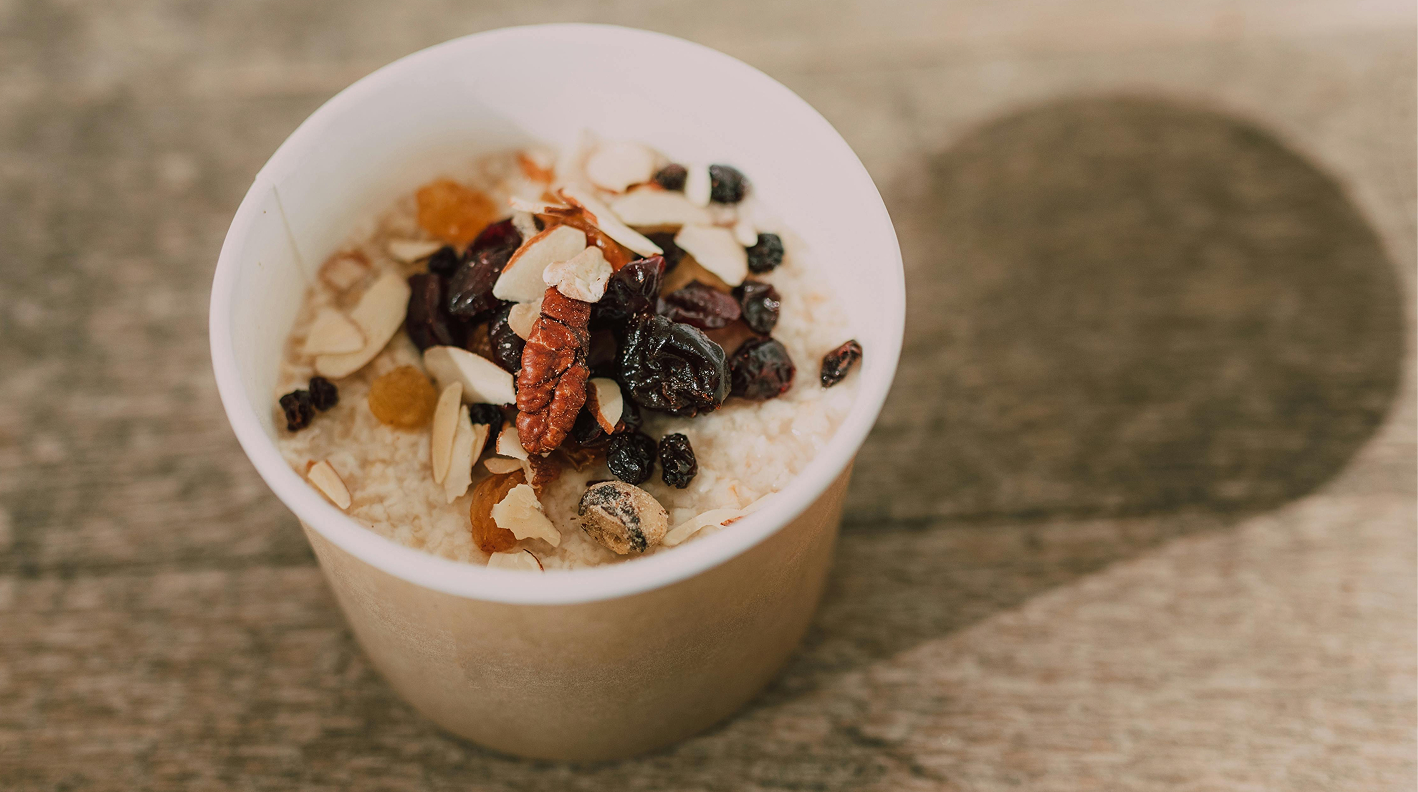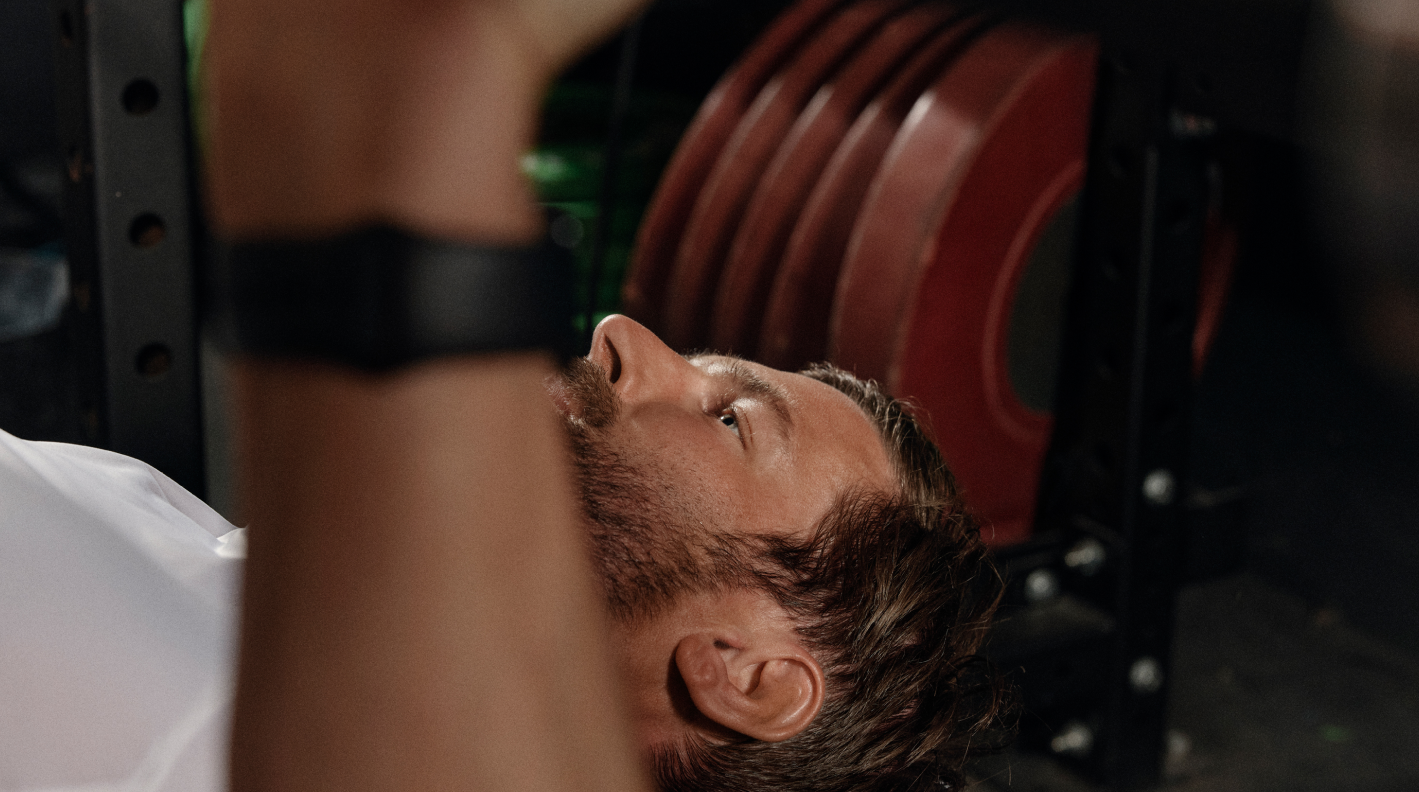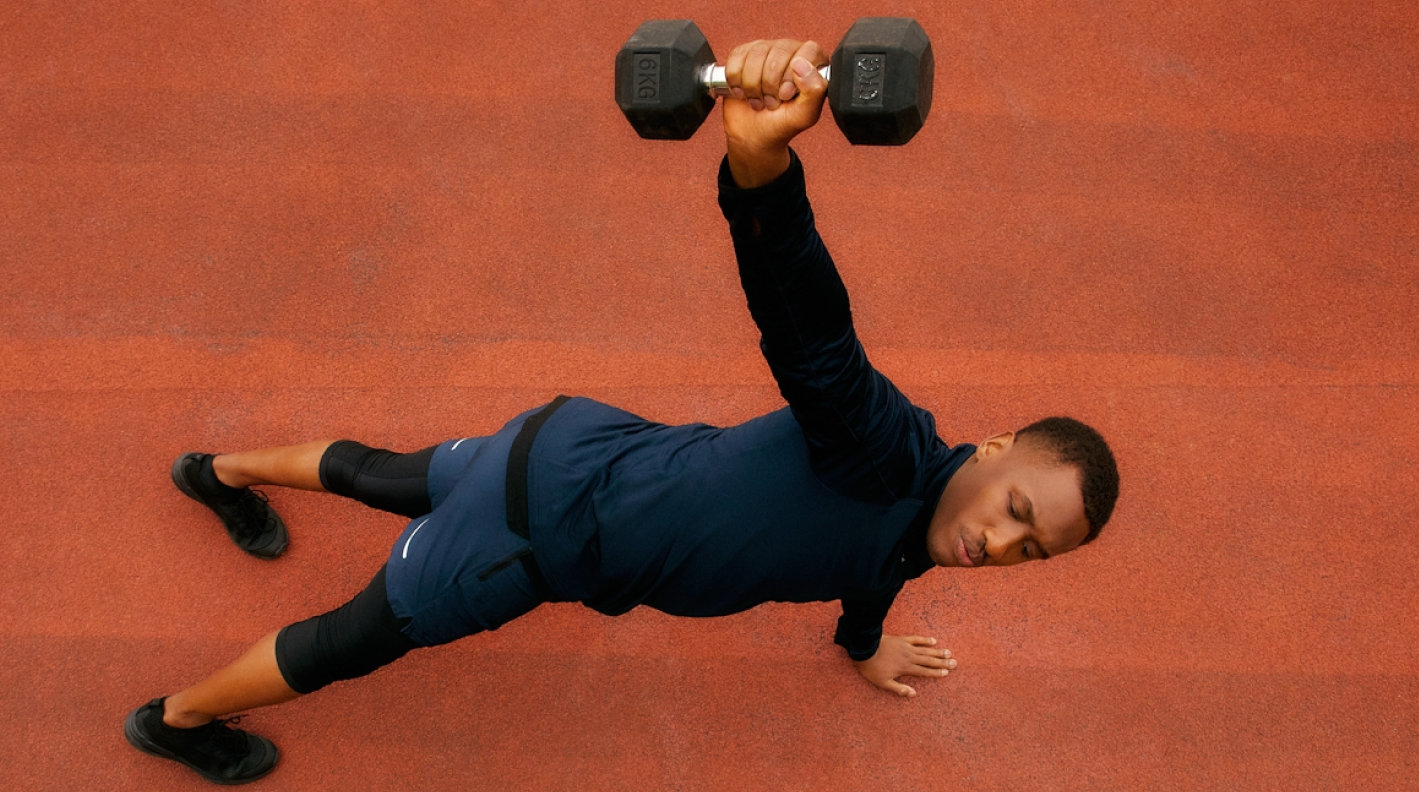How to start running: Tips to build stamina and stay consistent
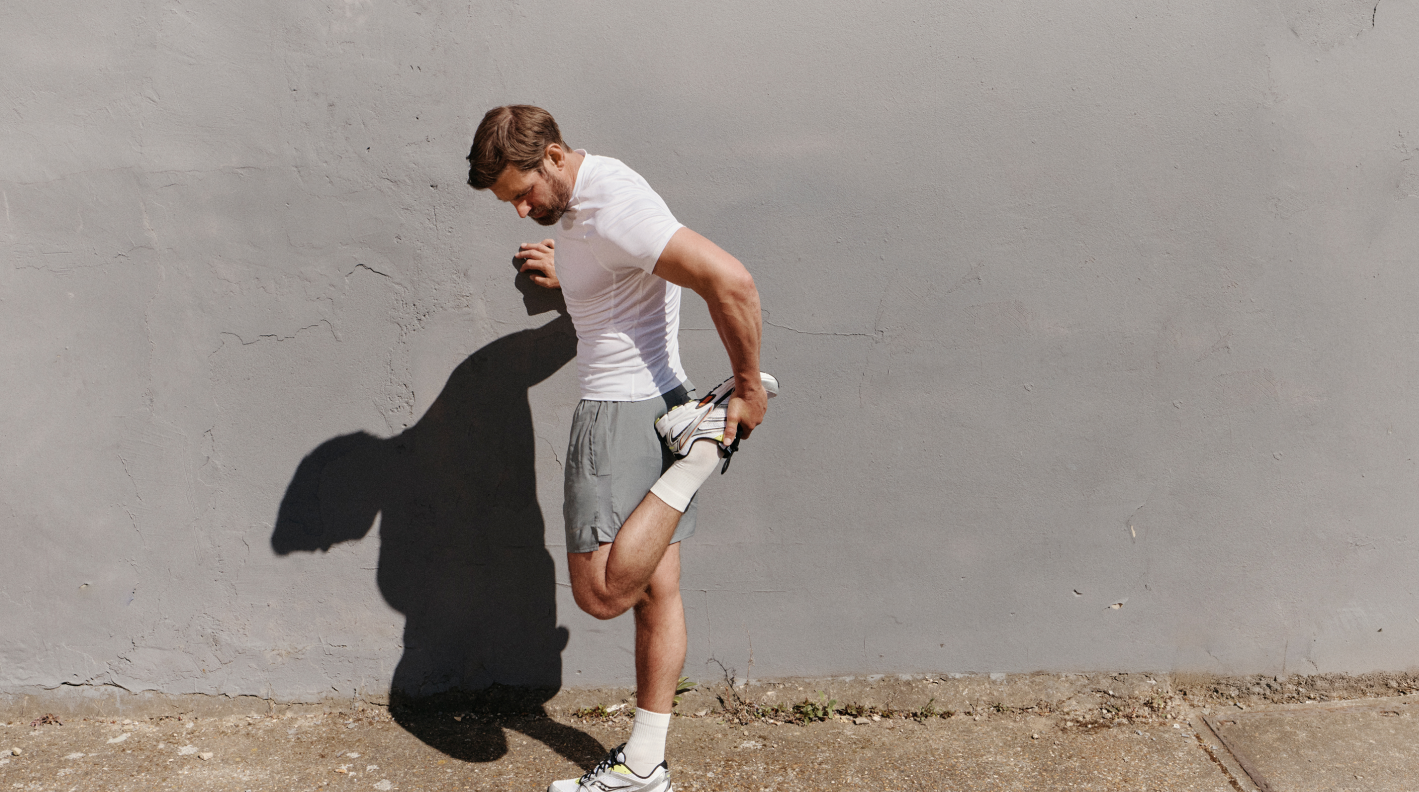
Key takeaways
- Running boosts cardiovascular health, supports weight loss, enhances mental well-being, and builds functional strength in the legs, core, and stabilisers. It’s an accessible way to improve metabolism and resilience with minimal equipment.
- Start with a realistic plan, like a run-walk routine to ease into the habit. Opt for 3 sessions per week at a conversational pace, invest in quality running shoes, and always warm up with dynamic stretches to prevent injury and improve performance.
- Set clear, achievable goals, track progress, and mix up your routes or playlists to keep things engaging. Joining a running group and celebrating small milestones, like better sleep or stronger legs, can help you stay consistent and enjoy the process.
You’d think running would be easy, after all, you’ve been doing it since you were a kid. Once you add grown-up knees, tight hamstrings and a questionable relationship with cardio into the mix, things get complicated.
Between conflicting advice, complicated training plans, and that old pair of trainers that definitely weren’t built for more than a brisk trot to the coffee shop, it’s no wonder so many new runners stall before they’ve even left the front door.
The good news? You don’t need to be a half-marathon hopeful or buy out the local running store to get started. All you need is a clear plan, the right mindset, and a gentle reminder that even most runners began by feeling wildly out of breath in the first 200 metres.
In this guide, we’ll share practical advice for how to start running, how to stay motivated without burning out, and why lacing up regularly could be one of the smartest things you ever do for your body and your brain.
What are the benefits of running?
Sure, running can burn calories, build endurance, tone your legs, and build muscle, but the real power of running lies in what it does across the board.
A consistent running journey supports everything from cardiovascular health to mental clarity to weight loss, all while requiring very little more than time, intention, and a decent pair of running shoes [1]. Whether you’re sprinting intervals or embracing a conversational pace on your lunch break, the benefits stack up fast.
It also builds discipline — the kind that trickles into other areas of life. When you stick to a running programme, you’re not just training your legs, lungs, and heart. You’re also training your brain to show up, even when things feel hard [2].
It’s not just exercise. It’s a habit that rewires your resilience, improves your relationship with discomfort, and gets you reacquainted with that post-run smugness that other runners keep raving about.
Improves cardiovascular health
Running helps strengthen your heart, lower blood pressure, and increase lung capacity — all while improving blood flow and oxygen delivery to muscles and organs [3]. Just a few sessions a week can make your heart more efficient and your body more resilient over longer periods.
Supports weight loss and metabolism
Running is one of the most effective ways to burn calories and lose body fat, especially when combined with strength training and a balanced diet.
Whether it’s steady state or run-walk intervals, you’re firing up your metabolic engine and keeping it humming long after your training run ends [4].
Boosts mental health and motivation
Lacing up can be as good for your head as it is for your body. Regular running releases endorphins, reduces stress, improves mood and sleep, making it a powerful tool for managing mental load [5].
Not to mention the meditative rhythm of one foot in front of the other.
Builds functional strength and movement
Running works more than just your legs — it engages the upper body, core, glutes, and stabilisers. Over time, it helps improve running form, balance, posture, and joint mobility, especially when paired with dynamic stretches and cross-training.
How should a beginner start running?
You don’t need a running coach, a GPS watch, or a secret athletic gene to begin, just a realistic plan and a willingness to start slow. For most new runners, the hardest part isn’t the running itself, it’s the expectation of what running “should” look like.
Spoiler: it doesn’t need to look like a highlight reel.
In fact, starting with a run-walk routine is one of the most effective ways to build endurance while preventing injuries. Starting a new running routine doesn’t have to feel like an all-or-nothing sprint — build gradually, stay consistent, and your body will thank you.
Think one minute of running followed by 90 seconds of walking, repeated for 20–30 minutes. Sounds doable? That’s the point.
Start with where your body is at
The best running programme is one that fits your current fitness level. If you’ve been mostly sedentary or are returning after time off, 3 sessions a week are plenty. Focus on duration, not speed.
A conversational pace (where you could chat without gasping) is the sweet spot. It might feel too easy at first, but that’s exactly where you want to be. Let your body adapt before layering on intensity.
If you’re new to exercise or have a pre-existing health condition, it’s important to speak with your doctor for recommendations on a safe and effective exercise routine.
If at any time you feel pain or tightness in the chest, shortness of breath or dizziness, stop exercise and take a rest.
Invest in the right pair of running shoes
Yes, your shoes matter. A lot. Good running shoes support your arches, cushion impact, and reduce strain across your knees, hips, and lower back.
Visit a proper shop, try a few pairs, and don’t be afraid to prioritise function over flash. This isn’t about impressing fellow runners, it’s about keeping your joints happy enough to keep showing up.
Warm up like it matters (because it does)
Before each run, aim for 5–10 minutes of dynamic stretches. Consider leg swings, hip openers, ankle rolls, and a short walk or jog [6].
It preps your muscles for movement, increases mobility, and gets your running form firing from the first step. Skip it, and you’ll spend the first mile feeling like a fridge with legs.
Tips for running form
Running with poor form won’t just slow you down — it’ll wear you down. Proper running technique helps improve efficiency, reduce your injury risk, and make the whole thing feel smoother. You don’t need to obsess over mechanics like an elite running coach, but a few small adjustments can make a massive difference.
Start by checking your posture: keep your head up, shoulders relaxed, and arms swinging naturally at your sides. Your elbows should be bent around 90 degrees, and your hands soft, not clenched. Your upper body should stay tall but not rigid, with a slight forward lean from the ankles, not the waist.
Next, look at your stride. Avoid overstriding (landing with your foot too far in front of your body) and aim instead to keep your steps light, quick, and under your centre of gravity. You’re aiming for efficiency, not drama. Smooth, quiet footfalls that feel like controlled momentum — not an accidental tap dance.
How to stay motivated while running
Let’s be honest: starting a running routine is the easy part. Staying consistent is where most people stall. Some runs will feel great. Others will feel like a personal attack from the universe. That’s normal.
Progress in running (like most things worth doing) comes down to showing up when you don’t feel like it. That’s where structure, goal-setting and mindset come in.
Having a clear training plan with small milestones makes a huge difference. Sign up for a 5K, track your next run, or join a local running club or online community (even just stalking Road Runners Club events can help you feel less alone). And remember: rest days count as progress too. They prevent burnout and keep your legs fresh for the long haul.
Quick tips to stay motivated
- Set running goals that are specific, measurable, and achievable
- Run with a mate
- Keep a log of your training runs to track progress over a few weeks
- Mix up your routes to keep things interesting
- Create a playlist or podcast queue that only gets played while running
- Remind yourself that even a short lunch break jog still counts
- Celebrate non-scale wins: better sleep, clearer head, stronger legs
Can you lose belly fat from running?
Yes, running can absolutely help reduce belly fat. It’s one of the most effective forms of cardio for burning calories, increasing energy expenditure, and improving insulin sensitivity [4].
When paired with a slight calorie deficit and a focus on nutrient-dense foods, a consistent running routine can help lower body fat percentage (including the stubborn kind that collects around the midsection).
That said, you can’t spot-reduce fat from your stomach alone. What running does is kickstart full-body fat loss, which over time will include the belly.
The magic isn’t just in the movement, it’s in the consistency. Regular training runs improve metabolic flexibility, helping your body use fat as fuel more efficiently [7]. Plus, the more you run, the more muscle you build in your legs and core. And the more muscle mass you carry, the higher your resting metabolism, meaning you’ll burn more calories even when you’re not pounding the pavement.
Where running really excels is in helping people stick to a long-term weight loss journey. It’s accessible, scalable, and doesn’t require complicated gear or a gym membership.
If you’re someone who wants to feel lighter, stronger, and more in control of your health, running is a powerful tool — but it works best when paired with a structured plan that covers all the bases: food, training, recovery, and support.
Compound's Body Transformation Programme combines medical treatments, prescriber support and personalised guidance to help you not just lose weight but completely transform your body and health for life.
- Breakthrough medication: Lose up to 21% of your body weight in 72 weeks with once-weekly, clinically proven treatment. It keeps you feeling fuller for longer, so eating less feels natural. Pair them with the Compound Code to lock results in for good.
- Compound Code: Our medication creates opportunity — Compound helps you seize it. Our proven system makes your treatment work harder. The Compound Code builds the muscle, energy, and fitness that medication alone can't deliver. Our holistic approach transforms not just how you look, but how you feel and function daily. So when you eventually finish treatment, your results don't disappear with it.
You’d think running would be easy, after all, you’ve been doing it since you were a kid. Once you add grown-up knees, tight hamstrings and a questionable relationship with cardio into the mix, things get complicated.
Between conflicting advice, complicated training plans, and that old pair of trainers that definitely weren’t built for more than a brisk trot to the coffee shop, it’s no wonder so many new runners stall before they’ve even left the front door.
The good news? You don’t need to be a half-marathon hopeful or buy out the local running store to get started. All you need is a clear plan, the right mindset, and a gentle reminder that even most runners began by feeling wildly out of breath in the first 200 metres.
In this guide, we’ll share practical advice for how to start running, how to stay motivated without burning out, and why lacing up regularly could be one of the smartest things you ever do for your body and your brain.
What are the benefits of running?
Sure, running can burn calories, build endurance, tone your legs, and build muscle, but the real power of running lies in what it does across the board.
A consistent running journey supports everything from cardiovascular health to mental clarity to weight loss, all while requiring very little more than time, intention, and a decent pair of running shoes [1]. Whether you’re sprinting intervals or embracing a conversational pace on your lunch break, the benefits stack up fast.
It also builds discipline — the kind that trickles into other areas of life. When you stick to a running programme, you’re not just training your legs, lungs, and heart. You’re also training your brain to show up, even when things feel hard [2].
It’s not just exercise. It’s a habit that rewires your resilience, improves your relationship with discomfort, and gets you reacquainted with that post-run smugness that other runners keep raving about.
Improves cardiovascular health
Running helps strengthen your heart, lower blood pressure, and increase lung capacity — all while improving blood flow and oxygen delivery to muscles and organs [3]. Just a few sessions a week can make your heart more efficient and your body more resilient over longer periods.
Supports weight loss and metabolism
Running is one of the most effective ways to burn calories and lose body fat, especially when combined with strength training and a balanced diet.
Whether it’s steady state or run-walk intervals, you’re firing up your metabolic engine and keeping it humming long after your training run ends [4].
Boosts mental health and motivation
Lacing up can be as good for your head as it is for your body. Regular running releases endorphins, reduces stress, improves mood and sleep, making it a powerful tool for managing mental load [5].
Not to mention the meditative rhythm of one foot in front of the other.
Builds functional strength and movement
Running works more than just your legs — it engages the upper body, core, glutes, and stabilisers. Over time, it helps improve running form, balance, posture, and joint mobility, especially when paired with dynamic stretches and cross-training.
How should a beginner start running?
You don’t need a running coach, a GPS watch, or a secret athletic gene to begin, just a realistic plan and a willingness to start slow. For most new runners, the hardest part isn’t the running itself, it’s the expectation of what running “should” look like.
Spoiler: it doesn’t need to look like a highlight reel.
In fact, starting with a run-walk routine is one of the most effective ways to build endurance while preventing injuries. Starting a new running routine doesn’t have to feel like an all-or-nothing sprint — build gradually, stay consistent, and your body will thank you.
Think one minute of running followed by 90 seconds of walking, repeated for 20–30 minutes. Sounds doable? That’s the point.
Start with where your body is at
The best running programme is one that fits your current fitness level. If you’ve been mostly sedentary or are returning after time off, 3 sessions a week are plenty. Focus on duration, not speed.
A conversational pace (where you could chat without gasping) is the sweet spot. It might feel too easy at first, but that’s exactly where you want to be. Let your body adapt before layering on intensity.
If you’re new to exercise or have a pre-existing health condition, it’s important to speak with your doctor for recommendations on a safe and effective exercise routine.
If at any time you feel pain or tightness in the chest, shortness of breath or dizziness, stop exercise and take a rest.
Invest in the right pair of running shoes
Yes, your shoes matter. A lot. Good running shoes support your arches, cushion impact, and reduce strain across your knees, hips, and lower back.
Visit a proper shop, try a few pairs, and don’t be afraid to prioritise function over flash. This isn’t about impressing fellow runners, it’s about keeping your joints happy enough to keep showing up.
Warm up like it matters (because it does)
Before each run, aim for 5–10 minutes of dynamic stretches. Consider leg swings, hip openers, ankle rolls, and a short walk or jog [6].
It preps your muscles for movement, increases mobility, and gets your running form firing from the first step. Skip it, and you’ll spend the first mile feeling like a fridge with legs.
Tips for running form
Running with poor form won’t just slow you down — it’ll wear you down. Proper running technique helps improve efficiency, reduce your injury risk, and make the whole thing feel smoother. You don’t need to obsess over mechanics like an elite running coach, but a few small adjustments can make a massive difference.
Start by checking your posture: keep your head up, shoulders relaxed, and arms swinging naturally at your sides. Your elbows should be bent around 90 degrees, and your hands soft, not clenched. Your upper body should stay tall but not rigid, with a slight forward lean from the ankles, not the waist.
Next, look at your stride. Avoid overstriding (landing with your foot too far in front of your body) and aim instead to keep your steps light, quick, and under your centre of gravity. You’re aiming for efficiency, not drama. Smooth, quiet footfalls that feel like controlled momentum — not an accidental tap dance.
How to stay motivated while running
Let’s be honest: starting a running routine is the easy part. Staying consistent is where most people stall. Some runs will feel great. Others will feel like a personal attack from the universe. That’s normal.
Progress in running (like most things worth doing) comes down to showing up when you don’t feel like it. That’s where structure, goal-setting and mindset come in.
Having a clear training plan with small milestones makes a huge difference. Sign up for a 5K, track your next run, or join a local running club or online community (even just stalking Road Runners Club events can help you feel less alone). And remember: rest days count as progress too. They prevent burnout and keep your legs fresh for the long haul.
Quick tips to stay motivated
- Set running goals that are specific, measurable, and achievable
- Run with a mate
- Keep a log of your training runs to track progress over a few weeks
- Mix up your routes to keep things interesting
- Create a playlist or podcast queue that only gets played while running
- Remind yourself that even a short lunch break jog still counts
- Celebrate non-scale wins: better sleep, clearer head, stronger legs
Can you lose belly fat from running?
Yes, running can absolutely help reduce belly fat. It’s one of the most effective forms of cardio for burning calories, increasing energy expenditure, and improving insulin sensitivity [4].
When paired with a slight calorie deficit and a focus on nutrient-dense foods, a consistent running routine can help lower body fat percentage (including the stubborn kind that collects around the midsection).
That said, you can’t spot-reduce fat from your stomach alone. What running does is kickstart full-body fat loss, which over time will include the belly.
The magic isn’t just in the movement, it’s in the consistency. Regular training runs improve metabolic flexibility, helping your body use fat as fuel more efficiently [7]. Plus, the more you run, the more muscle you build in your legs and core. And the more muscle mass you carry, the higher your resting metabolism, meaning you’ll burn more calories even when you’re not pounding the pavement.
Where running really excels is in helping people stick to a long-term weight loss journey. It’s accessible, scalable, and doesn’t require complicated gear or a gym membership.
If you’re someone who wants to feel lighter, stronger, and more in control of your health, running is a powerful tool — but it works best when paired with a structured plan that covers all the bases: food, training, recovery, and support.
Compound's Body Transformation Programme combines medical treatments, prescriber support and personalised guidance to help you not just lose weight but completely transform your body and health for life.
- Breakthrough medication: Lose up to 21% of your body weight in 72 weeks with once-weekly, clinically proven treatment. It keeps you feeling fuller for longer, so eating less feels natural. Pair them with the Compound Code to lock results in for good.
- Compound Code: Our medication creates opportunity — Compound helps you seize it. Our proven system makes your treatment work harder. The Compound Code builds the muscle, energy, and fitness that medication alone can't deliver. Our holistic approach transforms not just how you look, but how you feel and function daily. So when you eventually finish treatment, your results don't disappear with it.
- https://www.betterhealth.vic.gov.au/health/healthyliving/running-and-jogging-health-benefits
- https://www.hopkinsmedicine.org/health/wellness-and-prevention/the-truth-behind-runners-high-and-other-mental-benefits-of-running
- https://bjsm.bmj.com/content/54/15/898
- https://www.researchgate.net/figure/Metabolic-equivalents-METS-Associated-with-Common-Types-of-Endurance-Exercise_fig11_332994314
- http://www.jahonline.org/article/S1054-139X(12)00111-5/abstract
- https://www.nhs.uk/live-well/exercise/how-to-warm-up-before-exercising/
- https://www.sciencedirect.com/science/article/abs/pii/S2173509313000755

